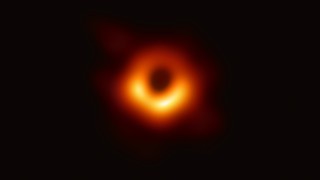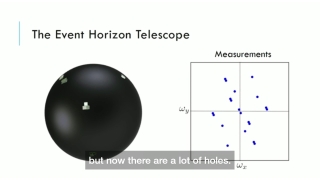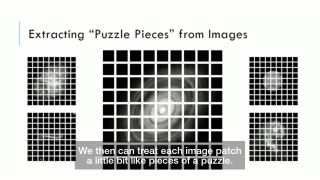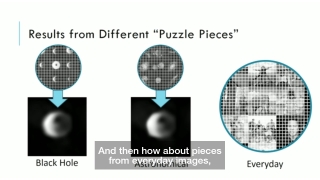The basic algorithm used to image black hole, revealed

At the heart of the milky way there’s a massive black hole that feeds off a spinning disks of hot gases, sucking up anything that ventures close to it–even light. We can’t see it but it’s event horizon costs a shadow could help answer some important event of universe. Scientists used to think taking such an huge image would take an telescope the size of the earth until Katie butman and team of astronomers came up with a clever alternative.
A hundred years ago Albert einstein first published his theory of general relativity. In the years since then scientists have provided a lot of evidence, in support of it. But one thing predicted from this theory, black holes, still have not been directly observed.
Although we have some ideas what black hole might look like, we’ve never actually taken a picture of it before.
But that did changed. We’re seeing first picture of our black hole, now.
Getting this first picture will come down to an international team of scientists, an earth sized telescope and an algorithm that puts together in final picture.
Here is the brief glimpse into the efforts involved.
So if you out past the bright city lights tonight, you may be just lucky enough to see a stunning view of the milky way galaxy.
And if you zoom past millions of stars, 26,000 light years towards the heart of the spiraling milky way, we do eventually reach at the cluster of stars right at the center. Peering past all galactic dust with infrared telescopes, astronomers have watched these stars for over 16 years.
But it’s what they don’t see is the most spectacular. These stars seems to orbit an invisible object. By tracking the path of these stars, astronomers have concluded that only thing small and heavy enough to cause this motion, is a supermassive black hole– an object so dense that it sucks up anything that ventures too close — even light.
But what happens if we were to zoom in further?
Is it impossible to see anything by definition, that is impossible to see?
If we were to zoom into radio wavelengths, we expect to see a ring of light caused by gravitational lensing of hot plasma zipping around the black hole.
In other words, the black hole cause the shadow on this backdrop of bright material, carving out a sphere of darkness. This bright ring reveals the black hole’s event horizon, where the gravitational pull becomes so great that not even light can escape.
Einstein’s equation predict the size and shape of this ring, so taking the picture of it wouldn’t really be only cool, it would also help us to verify that these equations hold in the extreme conditions around the black hole.
However this black hole is so far away from us, that from earth, this ring appears incredibly small — the same size to us as an orange appears to us on moon. That makes taking the picture of it extremely difficult.
Why is that?
Well, it all comes down to a simple equation.
Due to phenomenon called diffraction, there are fundamental limits to the smallest objects that we can possibly see.
This governing equation says that in order to see smaller and smaller, we need to make our telescope bigger and bigger. But even with the most powerful optical telescopes here on earth, we can’t even go close to the resolution necessary to the image of the surface of moon.
So how big telescope do we need in order to take a high resolution picture of the Black hole?
Well, by crunching the numbers you can easily calculate that we would need a telescope of the size of the entire earth.
If we could make a telescope of the size of the Earth we could just start to make that distinctive ring of light indicative of black hole’s event horizon.
Although this won’t allow us to see a clear image of the black hole but we could get a glimpse of the immediate environment around the black hole and black hole.
But as we all know building a single dish telescope of the size of the Earth would be impossible.
And by connecting telescopes around the world we were able to create an international collaboration called the Event horizon telescope, is creating a computational telescope of the size Earth, capable of resolving structure on the scale of black hole’s event horizon. Each telescope in the world wide network works together. Linked to the precise timings of atomic clock, teams of researchers at each of the site freeze light by collecting thousands of terabytes of data. This data is then processed here in a lab in Massachusetts.
So how does this even works?
So let’s just pretend we could built an earth sized telescope. So it would be a little bit like turning the Earth into a giant spinning disco ball. Each individual mirror would collect light that we could then combine together to make a picture.
However, now let’s say we remove most of those mirrors so only a few remained. We could still try to combine this information together, but now there are a lots of holes. These remaining represent the mirrors where we have telescope. This is an incredibly small number to take a measurements to make a picture from. But although we only collect light at a few telescopic locations, as the earth rotates, we get to see other measurements. In other words, as disco ball moves, mirrors changes locations and we get to observe different parts of the image.
Algorithms developed to take the picture of the black hole.
The imaging algorithm we develop to fill the missing gaps of the disco ball in order to reconstruct the underlying black hole image. Katie Bouman designed those algorithm to find the most reasonable image that also fits the telescope measurements. Using these algorithms we’re able to piece together the pictures from this sparse, noisy data.
Since there are number of infinite images that perfectly explain our telescope measurements, we have to chose between them in some way. We do this by ranking the images based upon how likely they are to be the black hole image,and then choosing the one that’s most likely.
But when it comes to the images from black hole, we’re posed with a real conundrum; we’ve not seen any black hole images before.
In that case what is likely a black hole image, and what should we assume about the structure of black hole?
If all images produce a very similar – looking image, then we can start to become more confident. One way we can try to impose different image features is by using pieces of existing images. So, we take a large collection of images, and we beark them down into their little patches. We then can treat each image like a puzzle pieces. And we used the commonly seen puzzle pieces to piece together in an image that also fits our telescopic measurements. Different types of pieces has distinctive set of puzzle pieces.
So if we get the same image by different set of puzzles we start to become more confident that the image assumptions we are making aren’t biasing the final image we get too much. So picture of a black hole that we have never seen before be eventually be created by piecing together the pictures we see all the time.
Measurements like these help us find the very first image of black hole and hopefully, verify those basic theories om which scientists rely on a daily basis.
Thankyou






Reply